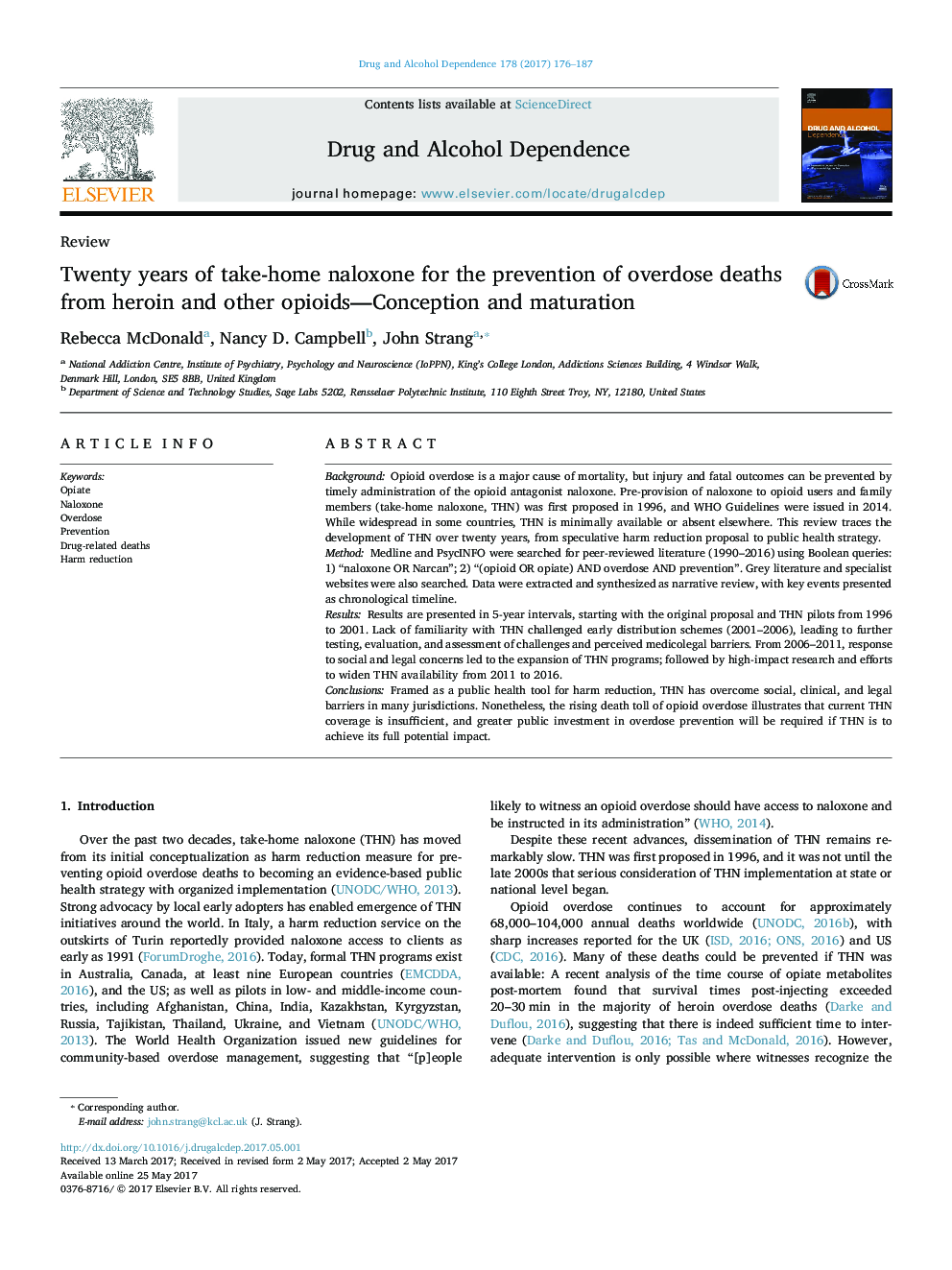| Article ID | Journal | Published Year | Pages | File Type |
|---|---|---|---|---|
| 5120322 | Drug and Alcohol Dependence | 2017 | 12 Pages |
â¢Deaths from opioid overdose can be prevented by prompt administration of naloxone.â¢It has been 20 years since take-home naloxone provision was first proposed.â¢Take-home naloxone programs have recently overcome legal barriers in many countries.â¢Take-home naloxone provision remains low compared to evident growing clinical need.â¢The 'opt-out' model of required pre-provision may achieve wider naloxone coverage.
BackgroundOpioid overdose is a major cause of mortality, but injury and fatal outcomes can be prevented by timely administration of the opioid antagonist naloxone. Pre-provision of naloxone to opioid users and family members (take-home naloxone, THN) was first proposed in 1996, and WHO Guidelines were issued in 2014. While widespread in some countries, THN is minimally available or absent elsewhere. This review traces the development of THN over twenty years, from speculative harm reduction proposal to public health strategy.MethodMedline and PsycINFO were searched for peer-reviewed literature (1990-2016) using Boolean queries: 1) “naloxone OR Narcan”; 2) “(opioid OR opiate) AND overdose AND prevention”. Grey literature and specialist websites were also searched. Data were extracted and synthesized as narrative review, with key events presented as chronological timeline.ResultsResults are presented in 5-year intervals, starting with the original proposal and THN pilots from 1996 to 2001. Lack of familiarity with THN challenged early distribution schemes (2001-2006), leading to further testing, evaluation, and assessment of challenges and perceived medicolegal barriers. From 2006-2011, response to social and legal concerns led to the expansion of THN programs; followed by high-impact research and efforts to widen THN availability from 2011 to 2016.ConclusionsFramed as a public health tool for harm reduction, THN has overcome social, clinical, and legal barriers in many jurisdictions. Nonetheless, the rising death toll of opioid overdose illustrates that current THN coverage is insufficient, and greater public investment in overdose prevention will be required if THN is to achieve its full potential impact.
